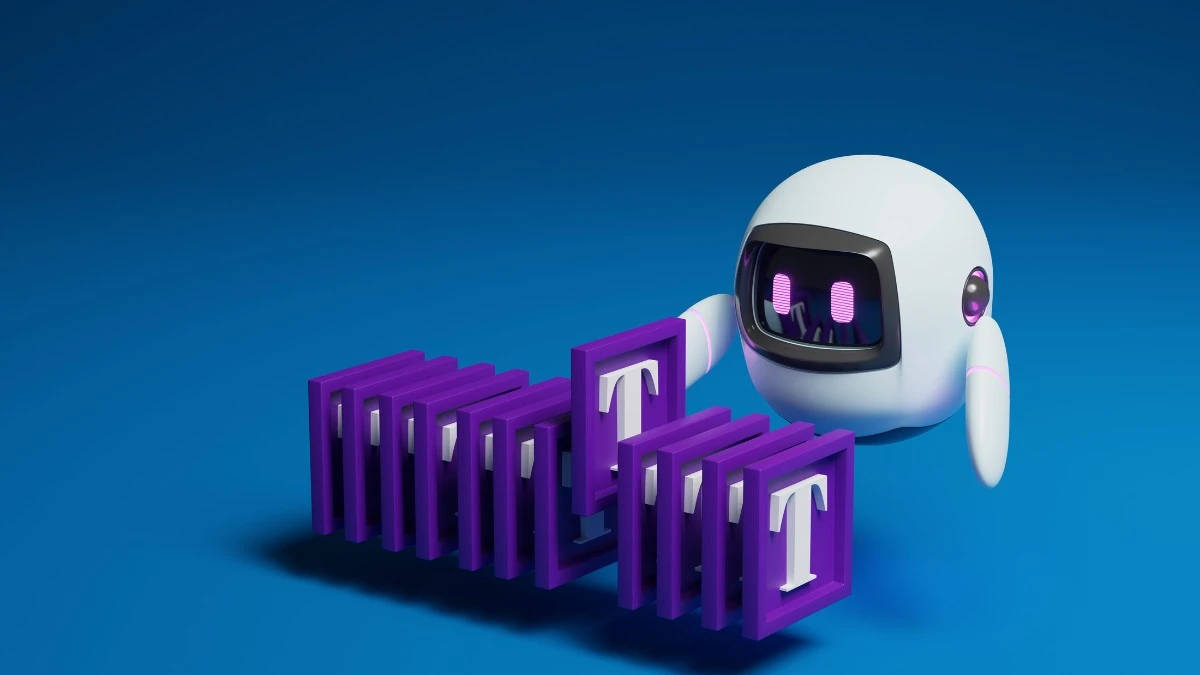The tech landscape is shifting fast and those who adapt will lead the pack in 2025. The secret lies in mastering 8 specific AI skills that most people overlook but smart professionals are already using to transform their careers.
These skills helped thousands of professionals boost their income by 40% in 2024 alone.
You can start learning them right now, even starting from scratch. Regular professionals use these exact strategies to create incredible opportunities in our AI-driven world. I’ll show you how to turn these skills into your career superpower, starting today.

1. AI-Assisted Development

Creating software with AI assistance marks a fundamental shift in how applications are built. This skill involves mastering platforms like Replit, GitHub Copilot, and other AI-powered development tools that can turn natural language descriptions into functional code. The process starts with understanding how to articulate software requirements in clear, structured ways that AI can interpret correctly.
The technical foundation includes learning API integration patterns, understanding basic software architecture concepts, and knowing how to validate and test AI-generated code. You’ll need to grasp concepts like version control, debugging techniques, and optimizing AI-generated solutions. A key aspect is learning to break down complex requirements into smaller, AI-manageable chunks while maintaining overall system coherence.
The real power comes from combining different AI development tools. For instance, you might use one AI system to generate the backend logic, another for the frontend interface, and a third for testing and documentation. According to McKinsey’s 2023 research, AI-assisted development can reduce coding time by up to 70% while maintaining or improving code quality. The skill extends beyond just writing code, including AI-assisted debugging, code optimization, and even architectural decision-making.
RELATED:
21 Lucrative AI-Powered Side Hustles for Over 50 To Make $20k Monthly, Plus Tips for Retirees
2. Prompt Engineering

Prompt engineering has evolved from simple text inputs to a sophisticated discipline that combines psychology, linguistics, and computer science. The skill requires understanding how different AI models interpret and process information, including their context windows, token limitations, and specific architectural strengths. Advanced prompt engineering involves creating layered prompts that build context progressively and maintain consistent output quality.
Technical proficiency in prompt engineering includes mastering techniques like few-shot learning, chain-of-thought prompting, and system message optimization. You need to understand how to structure prompts for different use cases – whether it’s content generation, code writing, or problem-solving. This includes learning about temperature settings, top-p sampling, and other parameters that influence AI output quality.
The business application of prompt engineering extends to creating standardized prompt libraries for organizations, developing prompt templates for specific industries, and building automated prompt optimization systems. You’ll need to learn how to test and iterate prompts systematically, measure their effectiveness, and adapt them based on performance metrics. This includes understanding how to handle edge cases, maintain output consistency, and scale prompt systems across large organizations.
3. AI Agent Development

AI agent development focuses on creating autonomous systems that can perform complex tasks without constant human supervision. This skill involves understanding different types of AI agents – from simple rule-based systems to sophisticated multi-agent architectures that can collaborate and adapt. The technical foundation includes learning about agent architectures, decision-making algorithms, and interaction protocols.
The implementation requires proficiency in tools like AutoGPT, Microsoft Power Automate, and custom agent frameworks. You need to understand how to define agent goals, constraints, and success metrics. This includes learning about reinforcement learning principles, reward systems, and how to balance autonomy with control. The technical stack often involves integrating multiple AI services, handling API rate limits, managing state, and implementing fallback mechanisms.
Creating effective AI agents also requires understanding business processes and workflows. You need to know how to map business requirements to agent capabilities, handle exceptions gracefully, and ensure agents can operate within compliance and security frameworks. This includes implementing monitoring systems, performance analytics, and continuous improvement mechanisms to optimize agent performance over time.
4. Content Generation

AI content generation has moved beyond basic text creation to become a sophisticated multi-modal skill. This involves mastering tools like GPT-4, DALL-E 3, Midjourney, and various audio/video generation systems. The technical aspect includes understanding different content generation architectures, including transformers, diffusion models, and neural networks.
The skill requires deep knowledge of content strategy, brand voice maintenance, and quality control systems. You need to understand how to create content briefs that consistently produce high-quality outputs across different formats. This includes learning about prompt chaining, content validation frameworks, and how to maintain brand consistency across AI-generated materials. The technical implementation often involves creating custom content pipelines that can handle different types of inputs and outputs while maintaining quality standards.
The business application extends to creating scalable content systems that can generate, validate, and distribute content automatically. This includes understanding content performance metrics, A/B testing methodologies, and how to optimize content for different platforms and audiences. You need to know how to implement content review workflows and quality assurance systems, and how to handle complex content requirements like multiple languages or regional variations.
5. Data Analysis & Business Intelligence

AI-powered data analysis goes beyond traditional business intelligence by incorporating predictive analytics and automated insight generation. This skill requires understanding both statistical principles and AI-based analysis techniques. The core technical components include mastering tools like Python with Pandas, TensorFlow for advanced analytics, and modern BI platforms augmented with AI capabilities.
The practical application involves creating automated analysis pipelines that can process unstructured data, identify patterns, and generate actionable insights. This includes building custom dashboards that update in real-time, setting up anomaly detection systems, and creating predictive models for business forecasting. You need to understand how to integrate multiple data sources, clean and prepare data for AI analysis, and ensure data quality throughout the process.
The business aspect focuses on translating raw data into strategic decisions. This means learning how to present complex findings in simple terms, creating data visualization systems that non-technical stakeholders can understand, and developing frameworks for data-driven decision-making. You also need to understand data governance principles, compliance requirements, and how to maintain data privacy while maximizing analytical value.
6. Risk Management & Security

Modern AI risk management combines traditional security principles with new challenges specific to AI systems. This skill requires understanding both cybersecurity fundamentals and AI-specific vulnerabilities. The technical foundation includes knowledge of AI model security, data poisoning prevention, and adversarial attack mitigation.
The implementation involves creating comprehensive security frameworks that protect AI systems while maintaining their functionality. This includes setting up monitoring systems for AI model behavior, implementing input validation systems, and creating response protocols for AI-specific security incidents. You need to understand concepts like model versioning, input sanitization, and output validation specific to AI systems.
Organizations need professionals who can assess and mitigate AI-related risks without hampering innovation. This includes developing policies for responsible AI use, creating audit trails for AI decisions, and ensuring compliance with emerging AI regulations. The skill also covers crisis management planning specific to AI incidents and developing recovery procedures for AI system failures.
7. Communication & Stakeholder Management

Successfully implementing AI requires strong communication skills tailored to different audiences. This skill involves translating complex AI concepts into business value propositions. You need to understand how to present AI capabilities realistically, manage expectations, and build trust with stakeholders who might be skeptical or concerned about AI implementation.
The technical aspect includes creating clear documentation systems for AI projects, developing training materials for different user groups, and establishing communication protocols for AI-related incidents. This involves understanding how to explain AI decision-making processes, communicate model limitations, and present AI performance metrics in meaningful ways.
The business application extends to change management and user adoption strategies. This includes developing stakeholder engagement plans, creating user feedback systems, and measuring adoption metrics. You need to know how to handle resistance to AI implementation, address concerns about job displacement, and build support for AI initiatives across organizations.
8. AI-Enhanced Productivity

AI-enhanced productivity focuses on optimizing both individual and organizational efficiency through AI tools. This skill requires understanding various AI productivity tools and how to integrate them effectively into existing workflows. The technical aspect includes mastering tools like AI-powered project management systems, automated scheduling tools, and intelligent document processing systems.
The implementation involves creating personalized productivity systems that leverage AI capabilities. This includes setting up automated task prioritization, developing AI-assisted decision-making frameworks, and creating intelligent information management systems. You must understand how to integrate multiple AI tools while maintaining workflow coherence and preventing tool overload.
The business application focuses on scaling these productivity gains across organizations. This includes developing standardized AI-enhanced workflows, creating training programs for AI tool adoption, and measuring productivity improvements. You need to understand how to balance automation with human judgment, maintain quality while increasing speed, and ensure that AI tools enhance rather than complicate existing processes.
Tired of 9-5 Grind? This Program Could Be Turning Point For Your Financial FREEDOM.

This AI side hustle is specially curated for part-time hustlers and full-time entrepreneurs – you literally need PINTEREST + Canva + ChatGPT to make an extra $5K to $10K monthly with 4-6 hours of weekly work. It’s the most powerful system that’s working right now. This program comes with 3-months of 1:1 Support so there is almost 0.034% chances of failure! START YOUR JOURNEY NOW!
